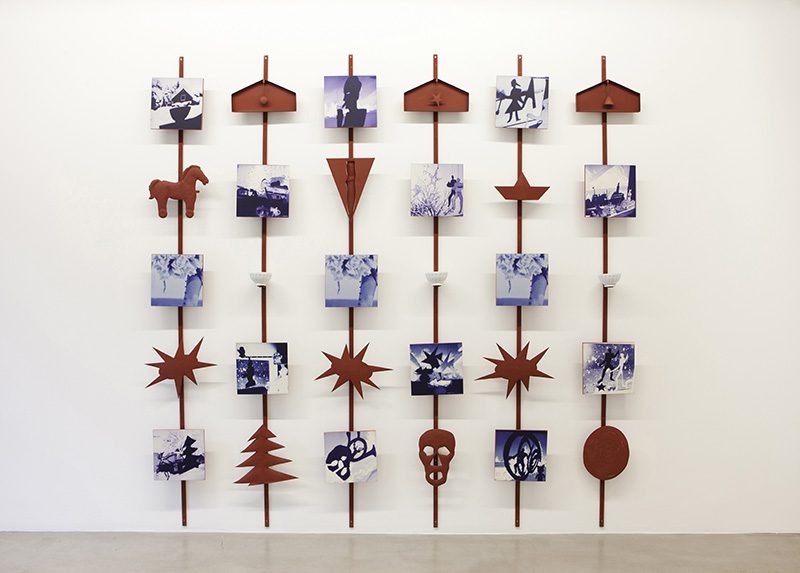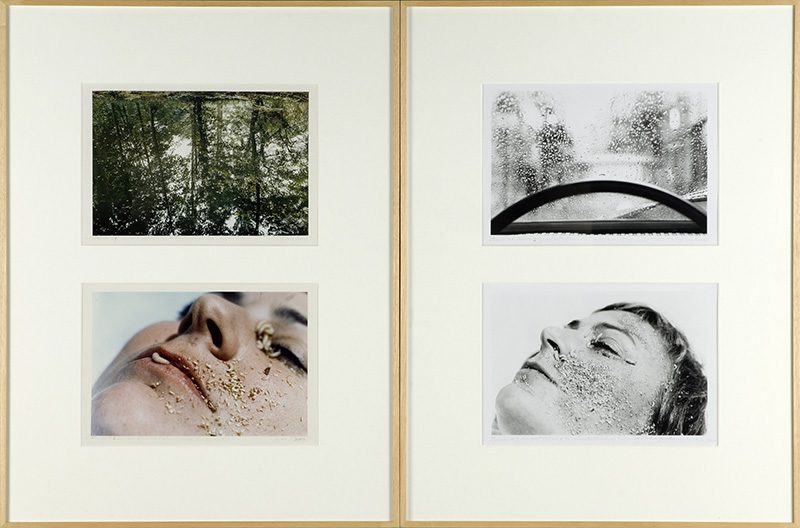ART-PRESENTATION: Gina Pane-Intersections
 From 60’s to 70’s the human body was the core centre of many artists’ research, as both the subject and the object of their work. Through her Performances, Gina Pane, wanted to break the common taboo and challenged the public policy and morality. Actions were shot and recorded with video, texts and pictures, which served as the evidence of the extreme art experiences.
From 60’s to 70’s the human body was the core centre of many artists’ research, as both the subject and the object of their work. Through her Performances, Gina Pane, wanted to break the common taboo and challenged the public policy and morality. Actions were shot and recorded with video, texts and pictures, which served as the evidence of the extreme art experiences.
By Dimitris Lempesis
Photo: MUSAC Archive
The exhibition “gina pane, intersections” explores different strands of Pane’s practice, individual responsibility towards nature and its degradation, the impact of social, economic and political conditions in the world (and also in art), the body as a field for exploration and as a symbol of fragility and pain, emotional relationships with others and particularly with women; and a fascination with the sacred. Gina Pane emerged in Europe at the peak of the Situationist movement. They believed that emphasis on commodity consumption instead of lived experience was leading to passivity and alienation. Situationists stated that this “Spectacle” could be countered by “The construction of situations, moments of life deliberately constructed for the purpose of reawakening and pursuing authentic d esires”.Gina Pane earned a place in the history of contemporary art thanks to her actions focused on the production of wounds. Her works with the body were nonetheless the result of a well-prepared and meditated project. The artist addressed the body in Performance both as a biological and psychological ground base as well as a social body. With her actions, the artist endeavoured to open up to others (to the other) and to get closer to different human realities such as identity, pain, and language through her own experiences, in what was a clearly holistic and intersectional conception. The works chosen to outline the various strands are underwritten by different techniques (painting, photographic panels also composed of drawings and text, video, sculpture) which echo the artist’s broadranging artistic restlessness, underpinned by a holistic vision of creativity. The most frequent reading of Gina Pane depicts her almost exclusively as an artist whose performances involved an element of personal risk. The wounds which she inflicted on herself in her actions throughout the ‘70s, foreclosed any possibility of the audience remaining aloof or indifferent. To a large extent, what pane was after was precisely to arouse the audience from its self-absorption and passiveness. For “Escalade non-anesthésiée”, an action from 1971, the artist used a metal object-ladder with sharp edges which she had built in her studio in Paris as a way of expressing the intensity of the violence at the time, when the Vietnam War was still being waged. Her early paintings were an attempt to bring into question the rigidity of the then all-prevailing Minimalism, inflecting it with vibrant, dynamic colouring. Her concerns then shifted towards nature, where she undertook various interventions which can be seen as an early approach to what we now know as environmentalism. Other projects showed an evident political awareness, addressing a worrying episode of pollution and radioactivity as a result of nuclear explosion, as in the case of “La pêche endeuillée” (1968-69), and the human consequences it caused. Around 1971-79 she created a kind of work which she called “constats d’action”, consisting of a panel with a composition of photographic images. These assemblages were coupled with drawings, notes and texts that contextualised the action and facilitated a better understanding of it. In the early ‘80s Pane undertook a series of works related with Christian iconography, inspired by her reading of “Legenda Aurea”, a 13th Century book by Jacobus de Voragine. Many of these works convey an alchemical energy in which the artist lends special meaning to the materials used (glass, copper, brass…) and the sacred symbolism of the martyr as in the case of “François d´Assise, trois fois aux blessures stigmatisées, Vérification-version I”, (1985-87). Rereading Gina Pane’s practice under the light of its intersectional and interdisciplinary condition (painting, drawing, sculpture, actions…) is absolutely critical for a proper analysis of her work in all its complexity and integrity, highlighting for instance the social commitment in her critique of social roles and of violence, and also her privileged relationship with the (social, sexual, emotional) problematics of women. Carried along by an intense psychic energy, the varied and powerful visual expressions of Pane’s output testify to an inner experience she sought to share with others.
Info: Curator: Juan Vicente Aliaga, MUSAC (Museo de Arte Contemporáneo de Castilla y León), Avenida de los Reyes Leoneses, 24, León, Duration: 30/1-24/4/16, Days & Hours: Tue-Fri 11:00-14:00 & 17:00-20:00, Sat-Sun 11:00-15:00 & 17:00-21:00, http://musac.es





